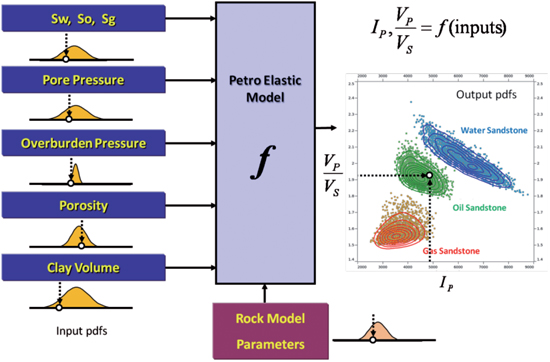RockSI
RockSI is a powerful tool for exploring the link between rock properties and seismic data for quantitative interpretation and feasibility studies. It can create detailed Petro-Elastic Models (PEMs), calibrate them with well data, and generate 3D and 4D Rock Physics Templates which show the relationship between seismic attributes, lithology, saturation, and pressure. It also provides statistical rock physics capabilities using Monte Carlo simulation to create training sets for lithology classification when well data are sparse, or simulate the seismic signature of different production scenarios.
Rock Physics Modeling Benefits of RockSI include:
- Build customized petro-elastic models for clastic or carbonate reservoirs
- Fully understand the link between seismic and rock properties
- Reduce uncertainty in interpretation of seismic attributes
- Untangle pressure and saturation effects for producing reservoirs
Customizable Rock Physics Workflow
The RockSI workflow is used to create detailed Petro-Elastic Models (PEMs) and calibrate them with well log data. As an input, RockSI uses interpreted logs for rock properties such as lithology, mineral composition, porosity and fluid saturations
Statistical Rock Physics Modeling
RockSI supports statistical rock physics modeling. Probability Distribution Functions (PDFs) are specified for the PEM input variables and for uncertain PEM parameters. The input PDFs are sampled using Monte Carlo simulation, and the corresponding elastic properties and velocities are calculated by applying the PEM to each set of simulated inputs.
4D Applications
4D Rock Physics Templates provide the link between dynamic reservoir properties and 4D seismic. Here the PEM-predicted changes in pressure and saturation are displayed as a graduated template in a 4D attribute cross-plot to aid the interpretation of time-lapse inversion results.
Monte Carlo simulation is used to model the 4D signature of water flooding and gas injection in an oil reservoir. 4D attribute PDFs are constructed from the PEM-based simulations and used to predict the probability of gas and water influx from 4D inversion results.





















